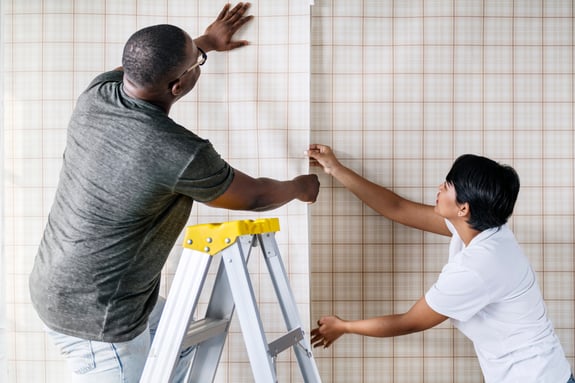It can be difficult to decide what type of booth will best fit your exhibiting needs. Each shape and size comes with its own pros and cons. Here’s what you need to know if you’re considering a peninsula booth.
What is a peninsula booth?
A peninsula booth has three sides exposed to aisles. The enclosed side of the booth typically backs up to linear booths. Sometimes, it backs up to another peninsula booth. In this case, it can also be called a “Split Island” booth.
What are the most common peninsula booth dimensions?
Peninsula booth dimensions start at 20’x20’. Typically, they are three to four times the size of a standard inline booth. Smaller booths with three exposed sides may look like peninsula booths, but are actually referred to as endcap booths.
Peninsula booth dimensions may also include a second floor, but it’s important to check specific trade show guidelines. Some shows have a height limit to prevent the neighboring linear booths from becoming obscured.
When to use a peninsula booth
With aisles on three sides, a peninsula booth will see plenty of traffic. You’ll have an opportunity to engage in product demonstrations, games, or other interactive activities on multiple fronts simultaneously. The large scale of peninsula booths offers the opportunity to get creative with your trade show booth design and set your booth apart from competitors.
Peninsula booth design best practices
Make the most of your attention-grabbing peninsula exhibit with smart trade show booth design strategies:
-
Walk this way:
Arrange entry points, demonstration areas, informational material, and meeting spaces so that attendees are guided through the booth in an order that makes sense. By controlling the path through your exhibit, you can influence the story your booth tells.
-
Keep things moving:
Movement and engaging activities like speakers, demonstrations, and games draw visitors to your booth and encourage them to learn more. Make sure all three sides of your peninsula are designed to support these activities. For example, provide platforms for performers or counter space for demos. -
Let there be light:
All that extra traffic won’t make much of an impact if your booth is under-lit. Place fixtures about every three feet, and use light-boxes to highlight important branding messages and images.
Special considerations
On top of the design and production costs associated with this kind of booth, you’ll want to budget for some additional expenses.
- Peninsula exhibit spaces allow for premium traffic and visibility, but it will come at a premium price. Perform research on the shows you’re interested in to ensure that your budget accounts for prime real estate you’ll be occupying.
- Since this type of exhibit allows attendees to approach from multiple angles, it’s important to provide adequate trade show booth staff. Ensure that you have enough staff members to handle the large space and multiple contact points.
Ready to go out on a limb (or shall we say, a peninsula)? The trade show gurus at Exhibit Options are here to answer any questions you have along the way – so don’t hesitate to reach out!



COMMENTS